During Carnival in Ecuador, juegos de agua (water games) take center stage in 8 days of wild celebration. Armed with water balloons and water guns, Ecuadorians turn public spaces into jubilant battlegrounds. Balconies and other high places serve as strategic positions from which to soak unsuspecting passersby. You can be sure of one thing only when you travel to Ecuador in February: expect to get wet.
As festivities kick into high gear, a carnivalesque spirit takes over the streets and surprises lurk around every corner. Water delivery instruments begin with balloons and water gun and are gradually upgraded to buckets and even water hoses. A common strategy for folks who’d rather not get doused is to equip themselves with rain ponchos and umbrellas before daring to venture out to the street. Water-phobic travelers are advised to do the same.
Why water?
As a water balloon hurtles in your direction, the ancient Andean roots of this tradition may not be immediately apparent. But Carnival in Ecuador – and across the Andes from Peru to Bolivia and parts of Chile and Argentina – is deeply interwoven with millennia-old indigenous traditions.
Prior to the 16th century arrival of Spanish colonizers, pre-Columbian Andean cultures celebrated planting festivals. Communities performed rituals with song and dance and made offerings of food and water to the fertility goddess, Pachamama (Mother World). Across the Andes, Pachamama’s special worship day is Martes de Challa or Challa Tuesday. In the Quechua language, challar means to sprinkle the earth. The date also happens to coincide with Shrove Tuesday in the Catholic calendar.
Aided by official Spanish policy to absorb indigenous beliefs into their own dominant religious practices, the two traditions merged over the slow course of centuries and evolved into today’s mestizo celebrations. On an Ecuador vacation in February, you’ll see the heady cultural mix of Catholic, indigenous, and modern influences on display everywhere, all melded together by the universal human impulse to let loose and have a good time.
The historical record is not clear about how the transition to water balloons happened, but as early as the 17th century, there are documented attempts by city and religious officials to eradicate these “water games.” To say that these efforts failed would be an understatement. Even in the present day, cities like Guayaquil and Ambato have instituted bans on throwing water during Carnival. As the adage goes, “idle hands are the devil’s workshop,” and cities have begun to offer jam-packed schedules of Carnival events in order to keep people busy at all hours of the day.
But the battle is not so easily won. Faced with prohibitions against flinging water, revelers have found a replacement in foam. That’s right. People carry cans that emit sprays of watery foam with a smell similar to shaving cream. Once Carnival revs up, all bets are off. Water and foam stream through the festival air, and to top it off, flour and paint join the arsenal of carnival ammunition.
Faced with this situation, the best approach for participants who travel to South America during Carnival celebrations is to adopt an “anything-goes” attitude. Receiving the first water balloon hit is always a shock, but this feeling is quickly replaced by one of liberation. Having been bombed by diluted paint or water, reciprocity is in order – you are free to bomb at will.
Where to go for Carnival in Ecuador
The biggest celebrations of Carnival in Ecuador are in the cities of Guaranda and Ambato. Both draw hundreds of domestic and international travelers seeking to witness the country’s largest cultural event. In addition to water fights, these carnivals share a few other characteristics.
Festivities always begin with the entrance into town of Taita Carnaval (Father Carnival) in town. Wearing a traditional Andean outfit that includes a felt hat and a hand-woven, brightly colored lamb’s wool poncho, Taita rides atop a cart loaded with food and drink, representing agricultural bounty, and he is escorted by dozens of groups of dancers and trains of allegorically-decorated parade floats. The whole event is toasted with quantities of the drink known as pájaro azul. During the week, the people select from among Ecuador’s most beautiful women and choose the Kuski Raymi Ñusta, literally “pretty woman” or carnival queen.
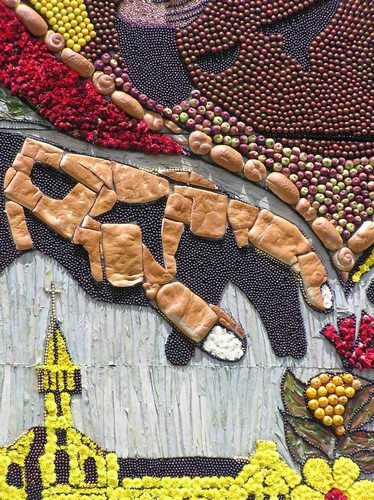
A popular attraction in Ambato is a huge religious mural constructed of fruits, breads, and flowers, which is perched over the doors of the Cathedral.
In Ambato, Carnival is also known as the Fiesta de las Flores y las Frutas (Festival of Flowers and Fruits). Floats are decorated with fruits and vegetables, and events include bullfights, fireworks, cockfights, and exhibitions of fruits, flowers, breads, and nuts typical of the region.
Inspired to celebrate Carnival in Ecuador or the Andes? Contact us to start planning your own dreamSouth America vacation.
Anabel has been exploring the length and width of South America since 2010. Ditching preconceptions, settling into the local pace, and embracing the unexpected are the tenets of her philosophy of travel – and life.

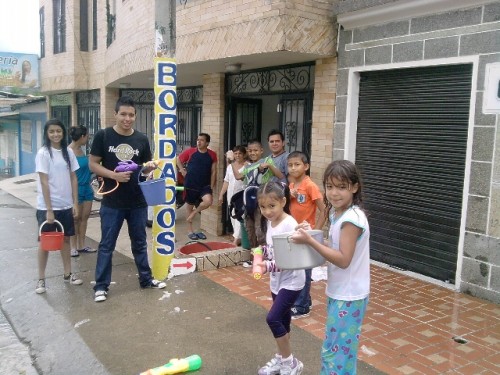
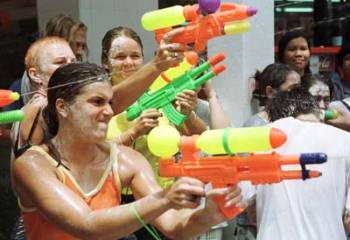
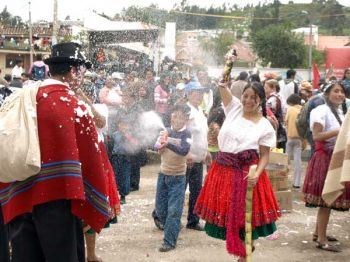
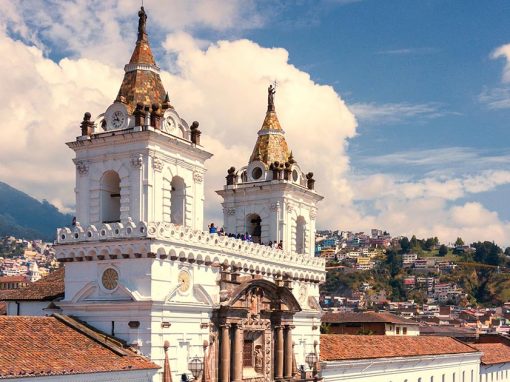
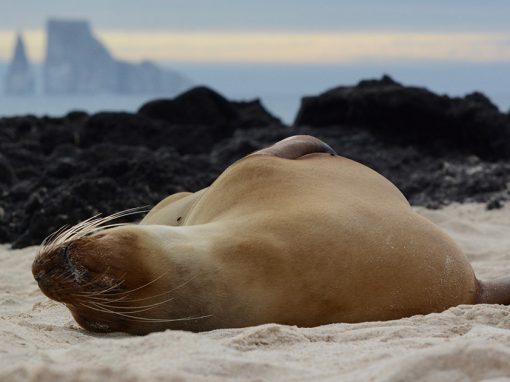

Pingback